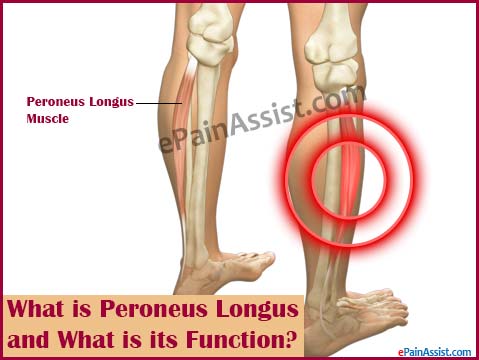What is Peroneus Longus and What is its Function?
The Peroneus Longus Muscle also known by the name of Fibularis Longus Muscle is situated in the outer portion of the foot and is responsible for flexion and eversion of the ankle. The Peroneus Longus Muscle is attached to the fibula and is innervated by the fibular nerve. This muscle traverses the entire length of the fibula before terminating in the form of a tendon at the lateral malleolus. It extends into the underside of the foot and is connected to the metatarsal bones. This muscle along with the peroneal retinaculum facilitates stabilization of the leg. Blood is provided to the muscle through the fibular artery. As is the case with many muscles present in the foot and ankle region, the Peroneus Longus is also prone to injuries, pain and strain due to its location as a result of overuse. People who are involved in long distances running especially marathons and cross country running where they have to deal with uneven surfaces can experience Peroneus Longus Pain or Strain. A trauma resulting in forceful twisting of the ankle or foot such as a slip and fall or stepping off of a curb can also cause Peroneus Longus Pain or Strain. Treatment for a strained Peroneus Longus is normally conservative with the help of antiinflammatory medications, ice and heat packs, wraps, exercises and adequate rest.

Signs and Symptoms of Peroneus Longus Muscle Pain or Strain
Symptoms of Peroneus Longus Pain or Strain is severe pain and swelling around the ankle and lower foot region. There may also be bruising around the ankle and foot region. The patient will find it difficult to ambulate unassisted. There will be worsening of pain with any attempts at inverting the foot inwards.
What Can Cause Peroneus Longus Pain or Strain?
The main reason why Peroneus Longus can get strained or cause pain is overuse. This is found normally in long distance runners. Also, people who have an occupation where they have to stand for a long period of time can also put a lot of pressure on the ankle and foot thus resulting in Peroneus Longus Pain or Strain. Sprinters who are involved with running races with hurdles like a steeplechase can also injure the Peroneus Longus Muscle as they have to move their ankle outwards excessively when crossing hurdles. Running down slopes or downhill can also cause Peroneus Longus Pain or Strain.
What is the Treatment for Peroneus Longus Pain or Strain?
Peroneus Longus Pain or Strain is mostly treated conservatively. Some of the treatment modalities include:
Adequate Rest: A period of rest is essential for peroneus longus pain or strain to heal and the swelling and inflammation to calm down. During this period it is important for the patient to not put any weight on the affected foot and to remain nonweightbearing on it.
Hot/Cold Packs to Treat Peroneus Longus Pain or Strain: The next step towards treatment is application of hot and cold packs. The patient can apply ice packs to the affected area for 15-20 minutes two to three times a day. The patient may also apply warm compresses to the affected foot a few times a day to reduce swelling and inflammation and to also allow the Peroneus Longus Pain or Strain to heal faster. It should be noted here that hot and cold packs should not be applied simultaneously.
NSAID: During this period of immobilization, the patient can take antiinflammatory medications to control pain and swelling associated with peroneus longus pain or strain.
Exercises: After about a week of nonweightbearing on the affected foot, the patient may start gentle stretching and strengthening of the foot to regain lost strength and flexibility due to immobilization. The patient may do these exercises to tolerance and allow the pain to be their guide.
Recovery Period for Peroneus Longus Pain or Strain
Normally after a week of immobilization and rest, the patient can start partial weightbearing on the injured foot. If the patient feels comfortable in doing so and has no pain then the patient may then progress to full weightbearing and gently get back into normal activities. Usually it takes two to three weeks for complete return to activities after recuperating from Peroneus Longus Pain or Strain.
